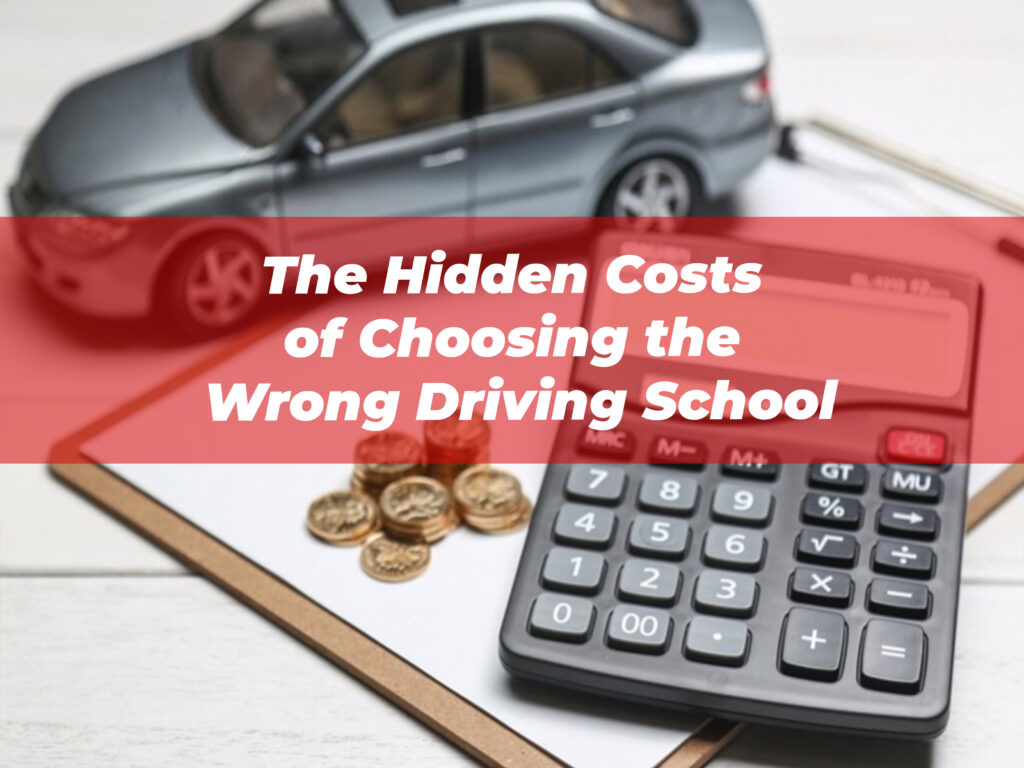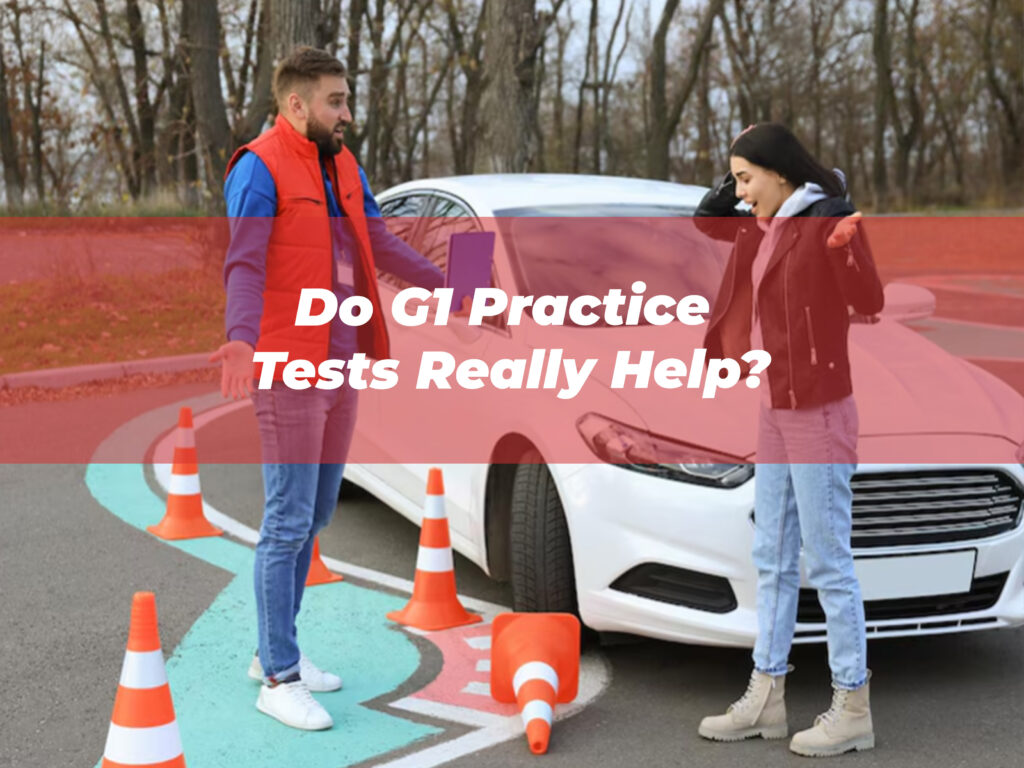Learning how to drive is a life-changing milestone. It grants freedom, opens up opportunities, and gives you control over your mobility. However, the excitement of this new chapter comes with an important decision you need to make carefully — choosing the right driving school. While many people focus solely on price or location when selecting a driving school, overlooking quality can lead to significant hidden costs that extend far beyond your initial payment.
Choosing the wrong driving school isn’t just an inconvenience; it can result in financial strain, emotional stress, and even safety risks. This blog will unpack these hidden costs and guide you with tips for making the right decision. After all, a driving instructor plays a major role in shaping your skills, confidence, and overall safety on the road.
Why Picking the Right Driving School Matters
Driving is an essential skill, but learning it the wrong way can have life-long consequences. The right driving school isn’t just about passing your driving test quickly; it’s about learning skills that ensure you stay safe and confident behind the wheel for years to come. Unfortunately, many learners overlook critical aspects when choosing a school, often opting for the cheapest or most convenient option.
The risks tied to poor-quality driving instruction can stick with you for a lifetime. To fully understand the importance of properly vetting a driving school, let’s explore the hidden costs of making the wrong choice.
1. The Financial Costs of Choosing the Wrong Driving School
At first glance, the cost of driving lessons from one school may seem outrageous compared to others offering bargain pricing. However, what you might save upfront could cost you a large amount in the long run.
a) Paying for More Lessons
Low-cost schools often equate to rushed or poorly structured lessons. If you don’t master skills as quickly or effectively as you should, you may find yourself needing many more lessons than anticipated. A cheap rate per lesson means nothing if you require twice the number of sessions to reach test standard.
b) Retaking Driving Tests
Driving tests are not free. Every time you fail means another payment for scheduling a test date. Choosing an unqualified or incompetent instructor increases the chance of failing because they may not properly prepare you for real-world scenarios or the test itself. Add in the emotional toll of failure, and this cost climbs higher.
c) Poor Maintenance of Training Vehicles
Some budget-friendly driving schools maintain their cars poorly to save costs. These older or unreliable vehicles may stall, break down, or lack modern safety features. Any accident or damage occurring during lessons may lead to disputes over liability, leaving you stuck with repair costs.
d) Higher Insurance Premiums
Graduating from a subpar driving school can negatively impact your driving record. Insurance companies may view inexperienced or poorly trained drivers as high-risk, increasing your premiums. Accidents caused by inadequate skills only push this cost further.
The temptation to save a few dollars upfront can lead to compounded financial burdens later. The phrase “you get what you pay for” rings especially true when investing in your driving education.
2. The Emotional Costs of Choosing the Wrong Driving School
Learning to drive can be exhilarating, but it’s also a process that requires patience, confidence, and trust. Picture yourself stuck in a car with an instructor who doesn’t take your needs seriously or fails to provide constructive feedback. The emotional costs in such cases can be profound.
a) Increased Anxiety and Stress
A bad instructor or chaotic lessons can leave learners feeling overwhelmed. If the lessons lack structure or the instructor is impatient, your anxiety behind the wheel could rise. This fear may eventually spill over into your driving test or everyday driving, making it a stressful experience.
For example, a poorly trained instructor might breeze over highway navigation or parallel parking without ensuring you feel comfortable. This lack of preparation sets you up for panic later.
b) Loss of Confidence
Driving is heavily rooted in confidence. If your instructor doesn’t offer clear guidance, patience, or encouragement, it’s easy to doubt your abilities. Such experiences can turn what should be an empowering milestone into a source of frustration and insecurity.
c) Dealing with Unprofessional Behavior
Unfortunately, some unvetted driving schools hire instructors who may not act professionally. This could include instructors showing up late, cutting lessons short, or even being rude or dismissive. Every wasted hour spent with someone you cannot trust drains your motivation and enthusiasm.
These emotional setbacks could affect more than your driving skills; they can diminish your belief in yourself, making the process far more complicated than it needs to be. A professional and supportive instructor, on the other hand, can help you conquer fears while providing consistent guidance.
3. The Safety Risks of Subpar Driving Schools
Your safety on the road depends heavily on the foundation of skills and knowledge you develop during your driving lessons. A substandard driving school can jeopardize your safety as well as that of other road users in the following ways:
a) Gaps in Knowledge
A good driving school doesn’t just prepare you for maneuverability; it teaches you about traffic laws, road signs, defensive driving techniques, and maintaining awareness. An incompetent instructor may skip these vital lessons, leaving critical gaps in your knowledge. This places you at risk when faced with complex or unexpected driving situations.

b) Lack of Emergency Preparedness
Proper training prepares drivers for emergencies, such as handling sudden braking, navigating hazardous weather, or dealing with distracted drivers on the road. If your instructor neglects these topics, your lack of preparedness could endanger yourself and others.
c) Poor Handling of Vehicles
A skilled instructor should focus on honing your ability to control the vehicle smoothly, teaching the importance of braking distance, speed maintenance, and steering precision. When these aspects are insufficiently taught, your likelihood of being involved in an accident increases.
d) Long-Term Bad Habits
Driving habits acquired during lessons often stay for years. Poor instruction leads to bad driving practices, many of which become automatic. Whether it’s forgetting to check blind spots, improper merging, or speeding in residential areas, these behaviors put everyone on the road at risk.
Driving isn’t just about you passing your test; it’s about keeping yourself and others safe. Skipping out on quality instruction can carry severe safety risks that no one should take lightly.
4. How to Avoid Choosing the Wrong Driving School
Choosing the right school can save you from the financial, emotional, and safety-related headaches discussed above. Here are a few practical steps to ensure you pick a trustworthy and professional school:
a) Research and Compare
Start by researching driving schools in your area. Look for reviews online and ask for recommendations from family or friends. Pay attention to consistent feedback about instructors, lesson quality, and pass rates.
b) Verify Credentials
Make sure the school is licensed and approved by your local transport authority. Additionally, confirm that the instructors are certified and fully trained to teach both theoretical and practical aspects of driving.
c) Ask About Lesson Plans
A good school should provide a structured curriculum tailored to your experience level. Ask about the topics covered in lessons and confirm whether they include practice with challenges like night driving, merging onto highways, or navigating roundabouts.
d) Inspect Training Vehicles
Check that the vehicles are in good condition, regularly maintained, and equipped with up-to-date safety features like working airbags and ABS brakes. Cleanliness and care reflect the school’s commitment to quality.
e) Prioritize Personalized Instruction
Individual attention can make all the difference, especially for nervous learners. Opt for schools that offer one-on-one lessons or small group sizes instead of cramming multiple students into one session.
f) Don’t Base Your Choice on Price Alone
While affordability is important, going for the cheapest option could backfire. Balance price considerations with the school’s reputation, experience, and overall value for money.










